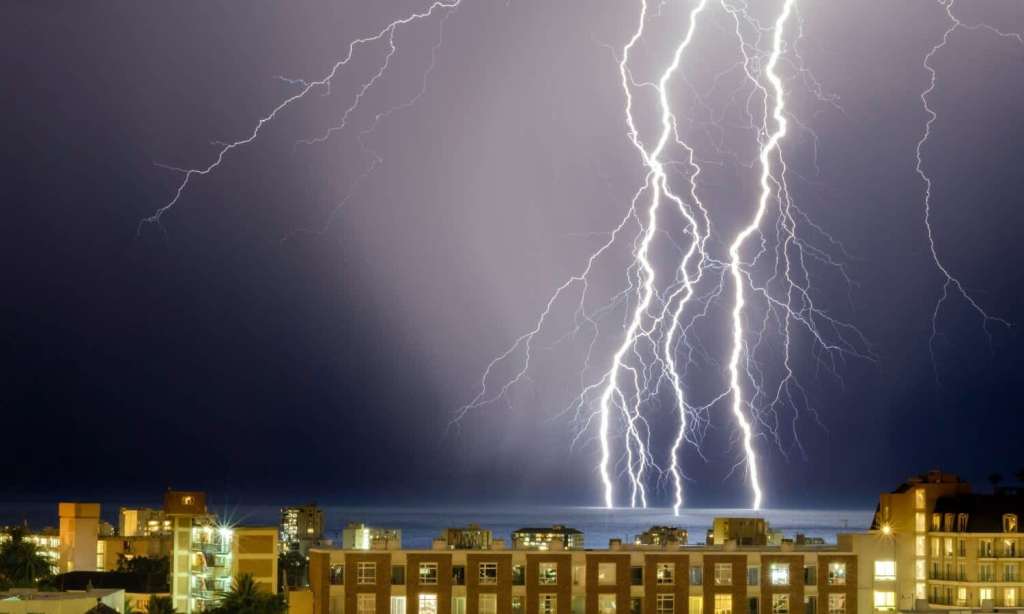You may dread a lightning storm (at least your dog probably does), but it turns out the weather event is is a really good thing for our environment. New findings reveal lightning bolts break apart nitrogen and oxygen molecules in the atmosphere, which helps contribute positively to climate change in a few ways.
When nitrogen and oxygen molecules merge together, it becomes a colourless and odourless gas, which can actually accelerate the burning of a fire or in this case; the heating up of our atmosphere.
In more scientific terms, nitrogen and oxygen combined produce nitrogen monoxide, which is a less obvious version of the gas that is released from vehicle exhaust systems. Basically, this is a pretty big contributing factor to the thinning of our ozone layer, which has been a climate issue we’ve been hearing about for literal decades.
Therefore, new findings that show lightning bolts that can’t be seen by camera or the naked eye actually produce extreme amounts of hydroperoxyl radical (HO2), which acts as a cleanser of the atmosphere, is real good news.
Lightning that isn’t able to be seen by the naked eye also produces lots of hydroxyl radical (OH), which is the main driver of many compositional changes in the atmosphere.
This new study marks the first time scientists have demonstrated how lightning bolts and less visible electric charges can produce large amounts of chemical oxidizing elements (OH and HO2).
Oxidants are the best at breaking down greenhouse gases. The highly reactive hydroxyl is actually known as the “detergent of the atmosphere”, because of its ability to oxidize almost every nasty chemical found in the troposphere.
For example, when hydroxyl reacts with methane, it dissolves in water and falls back to Earth as rain, literally cleansing the atmosphere of chemicals that exacerbate climate change.
“We are surprised by the extreme amounts of OH and HO2 generated in thunderstorm anvils and cores. They are orders of magnitude larger than any previous atmospheric HO2 or OH measurement,” says the author of the study, William H. Brune, a meteorologist at Pennsylvania State University.
This new data was actually rediscovered through an old study. Back in 2012, researchers flew over electrified anvil storm clouds, to see how lightning could clean the atmosphere. They found concentrations of hydroxyl and hydroperoxyl increased in anvil clouds and concluded that the clouds produce 2-16% of all hydroxide found on Earth. They also initially didn’t think that the high number of oxidants was caused by the lightning.
However, with this revisit to their findings, they were able to take measurements from the sky and the ground simultaneously, which helped them to demonstrate that lightning plays a huge role in atmospheric oxidation.
There are a lot of fancy words in here, we know. But basically, lightning creates a natural cleansing system that helps the atmosphere to rid itself of greenhouse gases and other yuck toxins that negatively impact the ozone layer and climate change.
Yeah, so all those sci-fi films you’ve seen about the world ending that include lightning; they’re officially scientifically incorrect. Which is kind of comforting, actually.
The researchers are currently planning another experiment to measure oxidation using more sophisticated equipment, including an aircraft that can measure clouds at various altitudes. These findings could help scientists further understand how thunderstorms may be able to help clean air pollution and how this phenomenon could help us with our increasing climate crisis.
Read more stories from The Latch and subscribe to our email newsletter.







